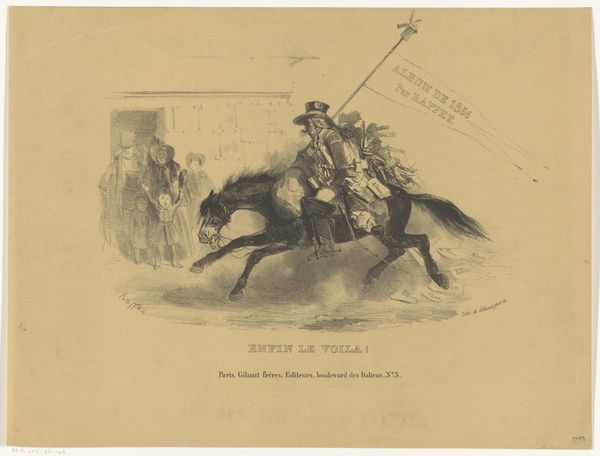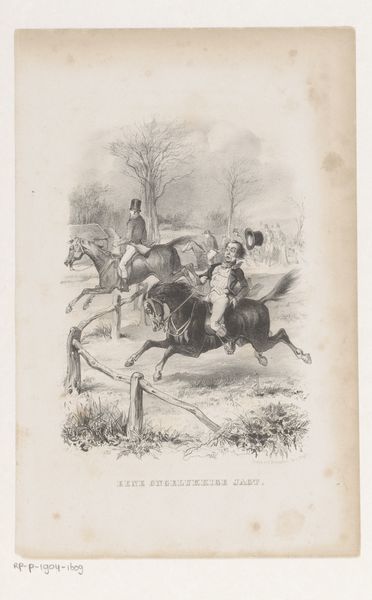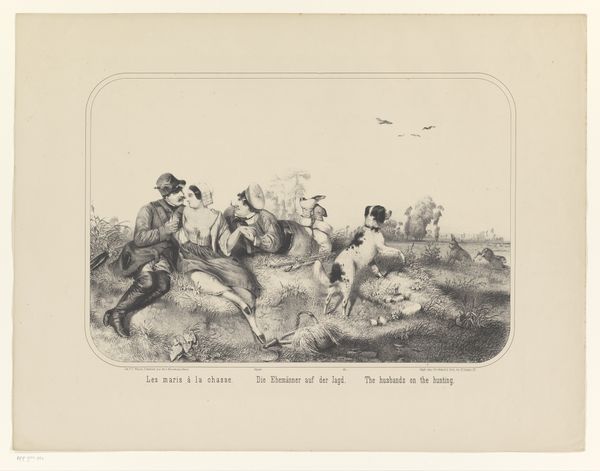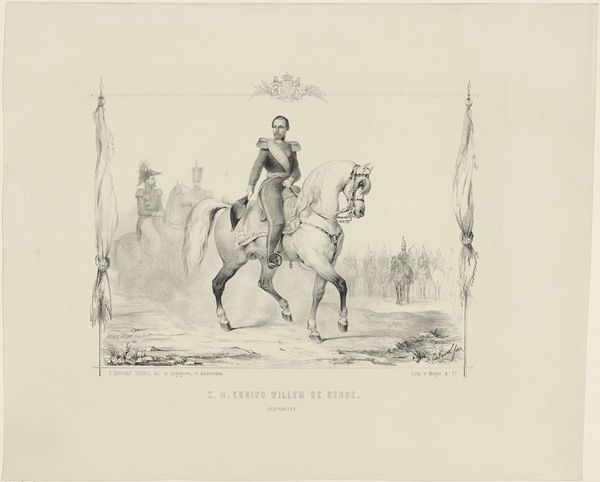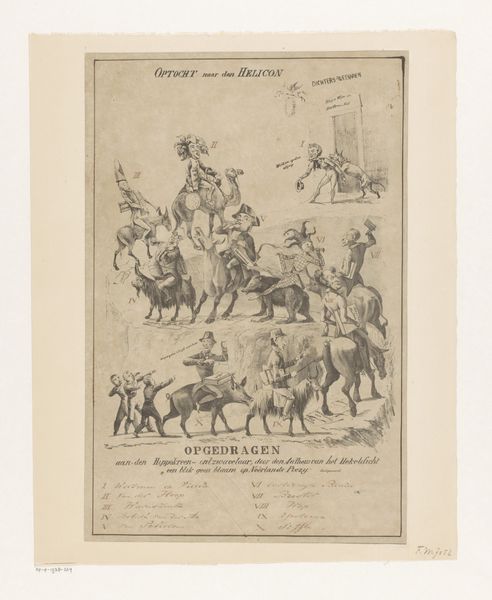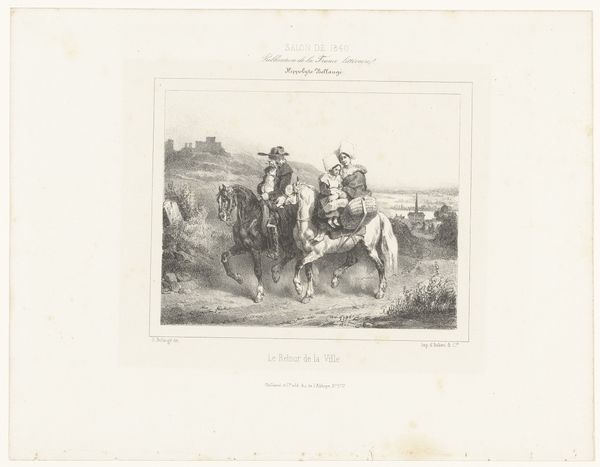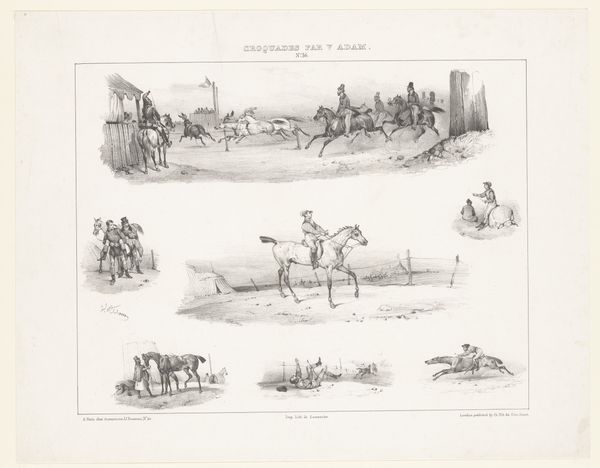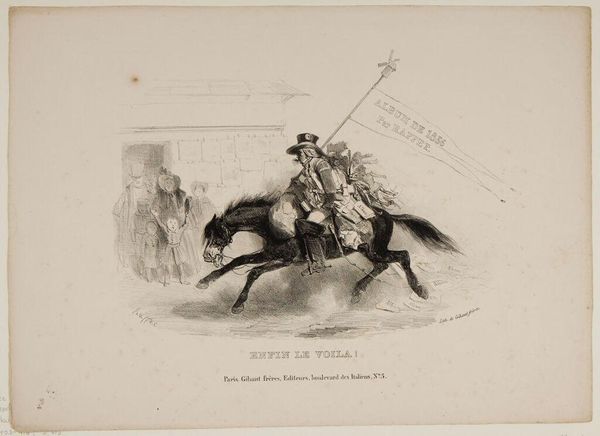
Not What Was Returned But Could Be Returned – To Represent the County of Buckingham and Bedford 1838
0:00
0:00
drawing, print, pencil, pen
#
drawing
#
narrative-art
# print
#
caricature
#
romanticism
#
pencil
#
pen
#
cityscape
Dimensions: Sheet: 12 3/16 × 18 1/16 in. (31 × 45.8 cm)
Copyright: Public Domain
Editor: This rather detailed pencil and pen drawing from 1838, titled "Not What Was Returned But Could Be Returned," seems to capture a moment of chaotic political theater. I'm immediately struck by the energy of the figures on horseback; it feels frantic. What do you see in this piece? Curator: The energy you perceive vibrates with the potency of cultural symbols. Observe how the figures, the horses, the weaponry--they are not merely representational. They invoke a visual language ingrained in the collective psyche. The act of riding itself carries an age-old symbolism of power and control, wouldn't you agree? Editor: Definitely! Especially the figure on the right with the gun, it suggests a sort of aggressive authority. And the "State of the Poll" text at the top... is the donkey also symbolic? Curator: Ah, the donkey! It is a potent caricature, deeply entwined with political discourse of the time. Can you think of an animal that more commonly signifies foolishness, obstinacy? How does the placement of this figure amidst the polling numbers shift its weight in the composition? This is not merely a scene; it’s a loaded statement, embedded with commentary accessible to contemporary viewers. Editor: It’s like the artist is using the animal to represent a candidate they see as ridiculous or incompetent, especially with the mention of "halfpence goes the Donkey." Curator: Precisely! It highlights the cultural memory embedded within these visual choices. Such graphic arts tapped into an understanding of those icons. What we, removed by centuries, often see as merely quaint was, for the people of the time, sharp, visceral communication. How does the print, even today, affect us despite not sharing those exact reference points? Editor: It definitely makes me consider how visual symbols continue to shape our political perceptions. I'll definitely keep a closer watch! Curator: Indeed. The power of such images endures, revealing our collective fascination with the psychology of persuasion, echoing throughout history.
Comments
No comments
Be the first to comment and join the conversation on the ultimate creative platform.
